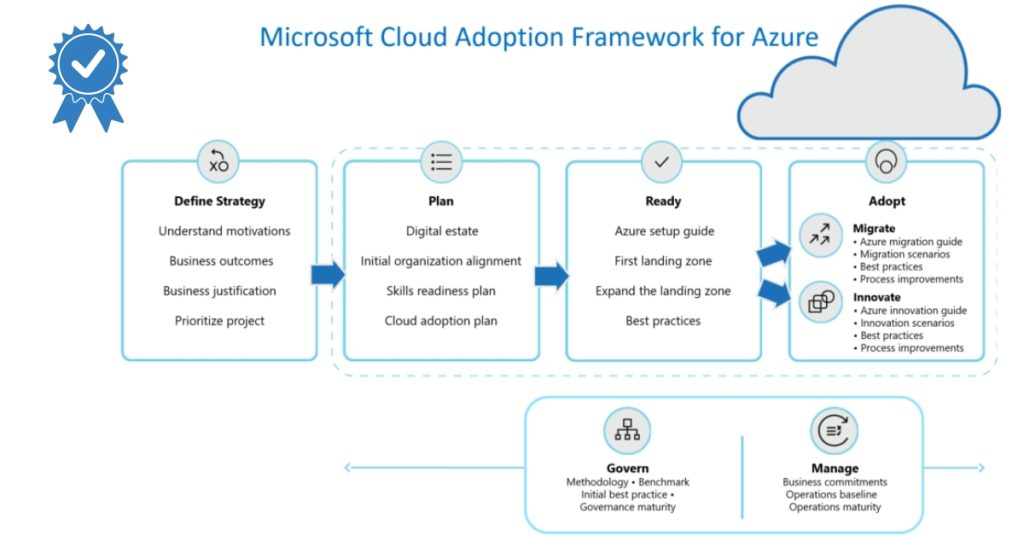
Navigating Cloud Adoption a Comprehensive Guide to Microsoft Azure Cloud Adoption Framework (CAF)
Cloud adoption is transforming the enterprise technology landscape, shifting from on-premises systems to flexible, scalable cloud solutions. The global cloud migration market, valued at over $180 billion in 2023, is set to surge to $630 billion in the next five years, driven by a robust CAGR of 28.24%. Despite this rapid growth, many cloud adoption strategies falter due to inadequate planning. This highlights the need for a well-structured cloud adoption framework.
When considering a move to the cloud, several questions arise: What is the budget? Which assets should migrate? Who oversees the process? What skills and tools are needed?
To streamline your transition, major cloud platforms like Azure, AWS, and GCP offer adoption frameworks. This article delves into Microsoft's Cloud Adoption Framework (CAF) for Azure.
What is Azure Cloud Adoption Framework (CAF)?
The Azure Cloud Adoption Framework (CAF) is a set of guidelines, tools, and best practices aimed at facilitating an effective transition to the Azure Cloud platform. CAF provides a roadmap divided into six phases, each offering best practices and guidelines to tackle common challenges. It aligns your cloud strategy with business goals, mitigates risks, and optimizes costs.
The Six Phases of Azure Cloud Adoption Framework (CAF)
- Define Strategy: Set cloud adoption goals aligned with business objectives. Assess your current IT landscape and decide which workloads to migrate, considering compliance and security requirements.
- Plan: Develop a detailed migration strategy, outlining the transition of applications, data, and processes to the cloud. Plan resources, select appropriate Azure services, and establish a governance framework for effective management.
- Ready: Prepare your technical environment—update infrastructure, networking, and security. Ensure seamless connectivity with Azure services and integrate security measures like identity and access management.
- Adopt: Migrate workloads to Azure using methods such as lift-and-shift or re-platforming. Plan to minimize disruptions and ensure a smooth transition.
- Govern: Implement policies and procedures to manage and monitor the Azure environment. Define roles, set up access controls, and establish monitoring mechanisms to ensure security and compliance.
- Manage and Optimize: Continuously manage and optimize cloud practices by collecting user feedback and monitoring performance. Right-size resources, enhance application performance, and explore new Azure features.
=> Click to Place Your Order at the Best Available Price <=
Benefits of the Azure Cloud Adoption Framework
- Structured Approach: Provides a clear path through each cloud adoption phase, reducing confusion and increasing success.
- Risk Mitigation: Offers best practices and tools to address data and compliance risks, ensuring a smoother transition.
- Cost Optimization: Helps avoid overspending by optimizing resource use and improving efficiency.
- Efficient Governance: Ensures compliance and security with robust policies and monitoring mechanisms.
- Streamlined Collaboration: Promotes teamwork across IT, operations, security, and compliance teams.
- Best Practices: Utilizes proven methodologies based on Microsoft's extensive cloud experience.
Why Partner with a Tech Expert for Azure CAF?
While Azure CAF provides a solid starting point, navigating its guidelines and tools requires technical expertise. Partnering with a trusted technology advisor can enhance your cloud adoption strategy and ensure you maximize the benefits of Azure.
Looking for expert guidance on your cloud journey? We’re here to help!
Comments (0)